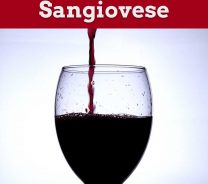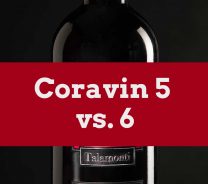There’s More to Chardonnay’s Meaning Than You Think
Last Updated on August 1st, 2023
Reader Disclosure Disclosure: We may earn commissions for purchases made through links on our site. Learn more on our about us page.How much meaning could a glass of wine possibly hold, you ask? Any winemaker, or wine connoisseur, would tell you of the many great qualities of the world’s most popular white wine, Chardonnay.
The rich history and versatile palate of Chardonnay are where the wine gets its elegance, as well as it’s meaning. This dry white comes from a range of white wine grapes, known as Chardonnay grapes, originating in the Mâconnais region of Burgundy, France.
Though its roots are French, the Chardonnay grape is now the most commonly planted white wine grape in vineyards across the globe. And the wine it produces is a worldwide bestseller.

There’s a Difference between meaning & definitions
What makes Chardonnay so appealing and interesting? The name of this wine is compelling and fun to say, and its definition is complex. The simple definition of Chardonnay is “a wine made from the Chardonnay grape.”
But there’s much more meaning behind this particular wine. Chardonnay is essentially a variety of green and white grapes used to make champagne and wine, primarily its namesake. Some consider Chardonnay to be “the cornerstone of champagne,” as the grape is one of three kinds found in most champagnes.
The wine is a neutral, full-bodied white with medium acidity. This means it is widely considered a blank canvas, both for winemakers and consumers alike. Winemakers can develop their technique and put their own stamp on the neutral flavor.
Wine drinkers can enjoy a glass with a wide assortment of food pairings, making it perfect for gatherings and social events.
What does the name Chardonnay mean?
The grape originated in the French village of Chardonnay. The name originally meant “place of thistles” or “thistle covered place.” In Latin, the name Chardonnay means “wild thistle” or “artichoke.”
Both of these words are commonly used to describe the Burgundy region of France during the Roman period. A thistle is a flower that helps to bring home the true meaning of Chardonnay. This lies within its versatile taste and adaptable growing conditions, like that of its native flower. A thistle is a fitting definition for Chardonnay.
The wine typically develops floral notes depending on the climate of the region in which it is grown and fermented. Though the wine grape is primarily grown in France, it has taken off across the world. This is due to its heavy yields and being relatively easy to grow in varying degrees of weather.
As a result, in warmer climates, the wine will take on sweeter, fruitier flavors, like:
- pineapple
- mango
Cooler settings will give flavors of stone fruits or orchard fruits, such as:
- peaches
- apricots
- apples
Whichever region your glass of Chardonnay comes from, if it’s made well, each sip should bring your mind to a vineyard in the countryside, enjoying the views with rolling hills of thistles.
Is Chardonnay a French word?
Chardonnay was born in the countryside of eastern France. To this day, the city of Mâcon in Burgundy is said to be taken over by the vines of the chardonnay grape. The grape and the wine alike are both an integral part of France’s deep-rooted history of winemaking and agriculture.
The French discovered Chardonnay by crossing the red grape pinot noir and the white grape gouais blanc. Enthusiasts will refer to the wine as “the red wine of whites” due to the French tradition of oaked Chardonnay providing such a bold, rich, and full flavor.
Most French wines are oaked or fermented in aged oak barrels, which is also the most common way Chardonnay is produced. The best Chardonnay is traditional and should taste like its roots in French history.
Why is the wine named Chardonnay?
The wine is named after the small town in which its grapes were first planted, in Chardonnay, France. Once they were discovered, chardonnay grapes quickly gained traction throughout Burgundy and other regions of France. Their vines began to take over the vast fields of thistle flowers in the countryside of Chardonnay.
The grapes grew quickly and with ease, producing heavy yields in many types of soil. These factors contribute to the wine’s popularity today. The monks of Chardonnay, who first crossbred the grape, used oak barrel fermentation to develop an elegant white wine.
This wine had floral tones and a nutty flavor that has since developed into modern adaptations of the wine.
Who decided to name a wine Chardonnay?
At the beginning of the 12th century, Cistercian monks began to build stone walls around their monastery in the village of Chardonnay. The people of Chardonnay would eventually learn in the 14th century that the monks were cultivating the vines of the white wine grape.
The French, and the rest of the world, would soon come to know and love this wine like Chardonnay. The monks set their wine apart from others by experimenting with their techniques.
They fermented the grapes without their skins. This is unlike other darker whites or red wines, resulting in Chardonnay’s pale, almost translucent coloring. This made the Cistercians’ Chardonnay stand out from other wines in the region.
It was so widely loved that demand for the wine developed, and so the wine was named after the grape and the hillside from which it grew.
Final Thoughts on Chardonnay’s Meaning
Whether you are on a French vacation or enjoying happy hour with your colleagues, having a glass of Chard will always connect you to the flavorful history of winemaking in France. Chardonnay is the perfect bottle to buy for a dinner party.
The taste and the story behind it will serve as great conversation pieces. If you’re a novice, you can know if Chardonnay is oaked or not by the robust taste of the first sip. For bolder bottles, try halibut or pork tenderloin, and for those lean flavored chardonnays, pair it with sushi, oysters, or risotto.
Though it has many appropriate pairings, you should base your choices upon the origin and flavor of your drinking wine. The warmer the climate, the sweeter and more aromatic the Chardonnay will be.
You can enjoy a glass of Chardonnay no matter your budget, location, or palate. Sit back, take a sip, and relax as peacefully as a monk living in a French vineyard.


















